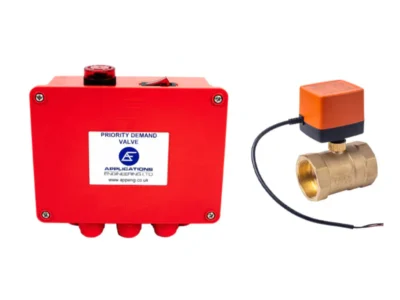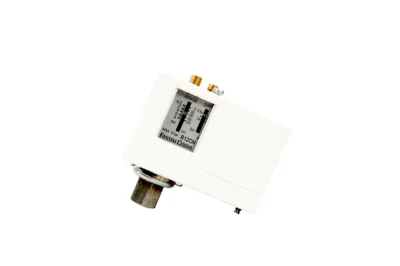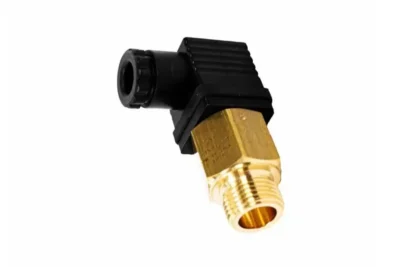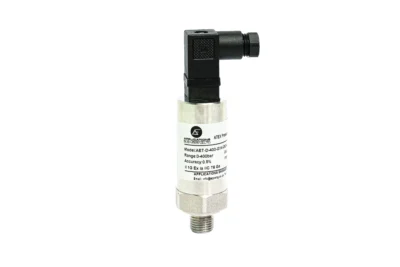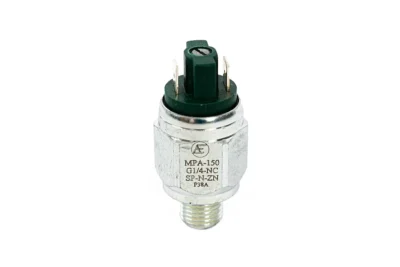Monitoring and analysing pressure levels is crucial across many commercial and industrial applications – from hydraulic equipment to combustion engines, to name just a couple.
Adjustable pressure switches serve the vital role of monitoring predicted or unexpected pressure changes and keeping pneumatics in good working order. Users are alerted when the pressure drops below a predefined minimum level or reaches a particularly high point.
But what exactly are pressure switches, and what types are available to suit different installations? In this post, the experts at Applications Engineering provide an overview of how pressure switches work along with the various options available to you.
What Is a Pressure Switch?
Pressure switches, often used interchangeably with similar terms like pressure transmitters, are two-part devices consisting of a transducer and an electrical switch. Their purpose is to provide systems with electrical feedback when responding to a fluctuation in pressure.
Here at Applications Engineering, we can supply a broad range of pressure switches and components, including vacuum switches and pressure transducers.
How Does a Pressure Switch Work?
These switches can work in one of two ways, hence why there are distinctions between single-port and double-port pressure switches.
In single-port pressure switches, pressure enters through the device port and reaches a diaphragm, piston or bourdon tube. Inside the device is a pre-loaded spring with a defined threshold. If the force of pressure entering the switch is greater than the spring’s exertion, the switch contacts will be activated, thus breaking the circuit and triggering a pressure change alert.
Double-port switches work similarly, but pressure can enter the device from both ports. In a two-port pressure switch, the pressure from both ports is compared and should, in theory, be the same. If the pressure levels are different, the switch can therefore alert the user.
Pressure switches monitor pressure in liquids, gases, or both depending on the model. They come with adjustable or fixed setpoints to accommodate different pressure ranges.
Types of Pressure Switches
There are two main pressure switch categories: electromechanical and solid-state. Let’s explore the differences.
Electromechanical Pressure Switches
As the name suggests, electromechanical pressure switches have mechanical moving parts within the electrical switch mechanism itself. The sensor detects pressure changes and physically flips or slides internal components to open or close the electrical contacts.
Common transducer types include:
- Piston actuators
- Diaphragms
- Bourdon tubes
Electromechanical switches can handle higher electrical loads safely. On the downside, their mechanical nature makes them more prone to wear over time.
Solid-State Pressure Switches
Solid-state pressure switches, by comparison, have no internal moving parts. Instead, they rely on semiconductors rather than moving contacts to switch electricity on or off. With no physical components sliding around, changes in electrical capacity or resistance flip the circuit when pressure shifts.
Solid-state switches use sensors such as strain gauges or piezoelectric elements. Without moving parts, they offer extended lifespan along with precision sensing, however, their switching capacity tends to be lower than in electromechanical models.
Choosing the Right Mechanical Pressure Switch
When selecting a pressure switch, consider what level of precision your application demands along with the electrical loads involved. Electromechanical models are a robust pick for higher-powered circuits, while solid-state options shine when intricate pressure monitoring is needed.
Of course, assessing all the specifications can be daunting – with so many options it can be difficult to know where to begin. That’s where the Applications Engineering team comes in. Reach out to us for pressure switch recommendations tailored to your specific operation and equipment, even if you just need advice at this stage.
Find High-Quality Pressure Switches and Gauges
With decades of experience supplying facilities across the UK, Applications Engineering has your back for selecting and implementing reliable pressure switches and parts. We offer only high-quality components you can count on from major manufacturers like ATEX.
Contact our team today to keep your equipment operating safely.
Share This Post
